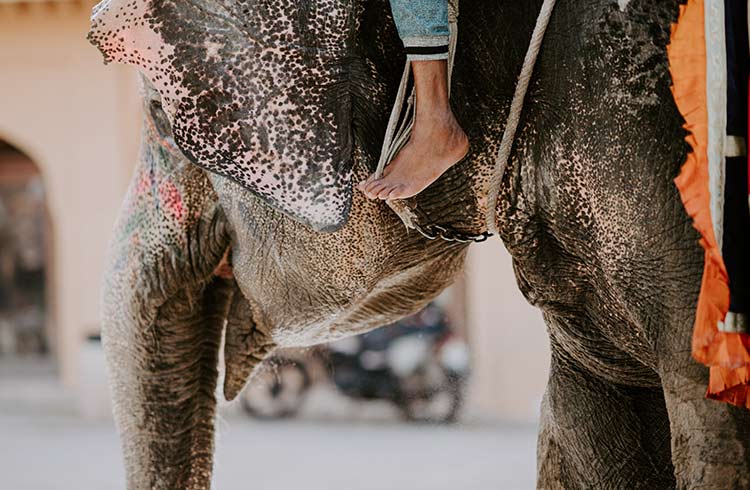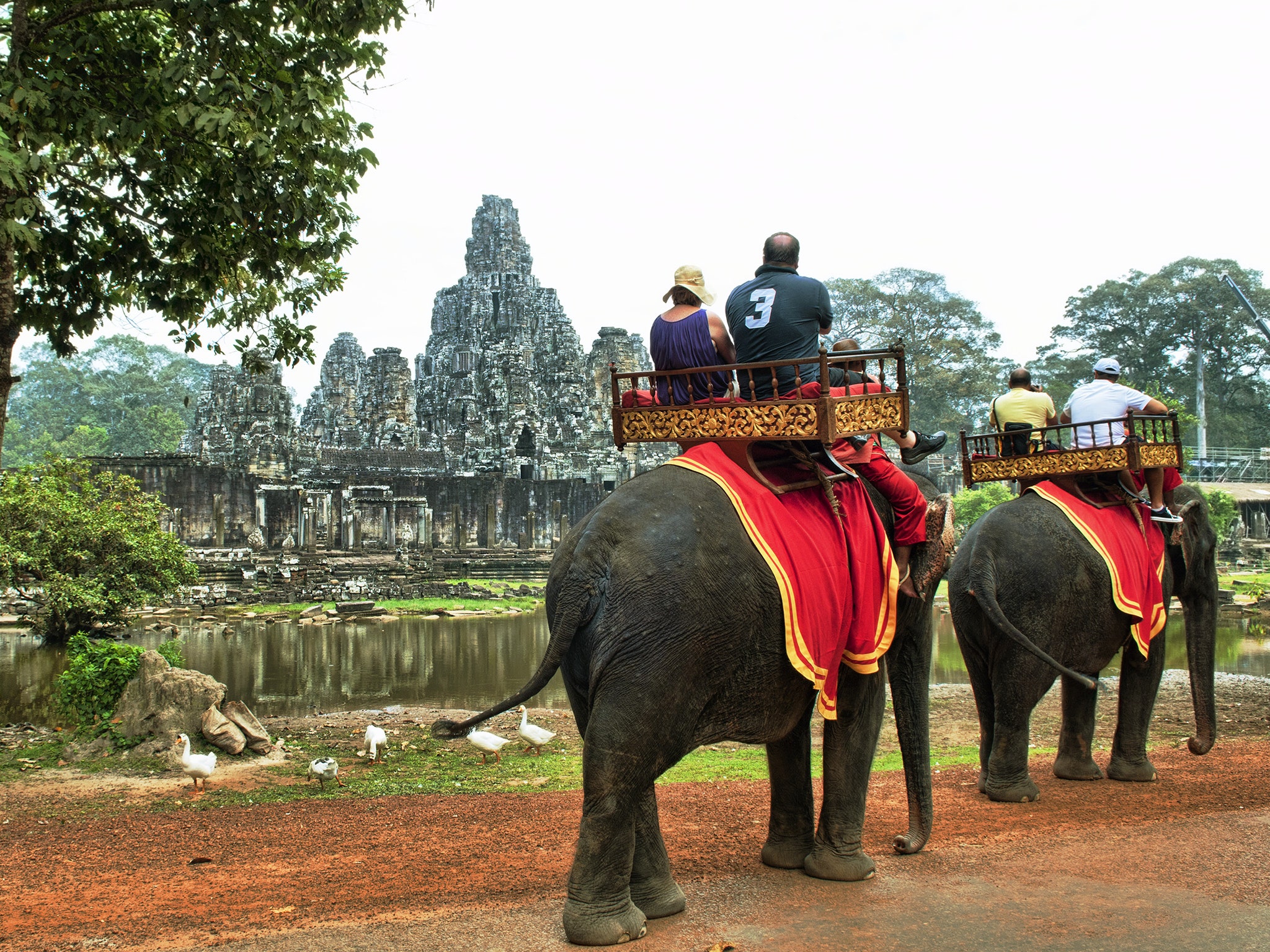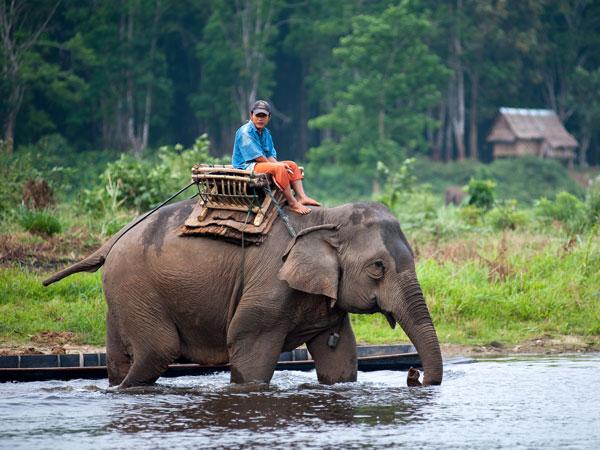Elephant Riding - Not For Your Next Bucket List Adventure
Posted on July 13th, 2020

While more and more people are becoming compassionate towards animals and treating them with care, it is sad that the tourism industry seems to be going in the other direction.
Elephants used for riding across Asia are kept in the most unacceptable conditions which has resulted in cruelty on elephants on the account of ignorant tourists who enjoy these activities turning a blind eye to animal welfare. The elephants are not provided with proper food and habitat and their movement is limited.
Although elephants are incredibly intelligent and docile by nature, there is very little about the behaviors exhibited by captive elephants in the tourism industry that is natural. To get these mighty animals to interact with humans, they must undergo an extraordinarily cruel spirit breaking process called Phajaan that renders them submissive to their human trainers. After Phajaan, the elephants know only two emotions- pain and fear.

To break their spirit, baby elephants are kidnapped and snatched from their mothers, isolated, chained, starved and beaten until they are submissive.
Usually a mahout will be sole charge of a single elephant. An elephant’s mahout may or may not be involved in the physical abuse during Phajaan. In the final stage of the Phajaan, the elephant’s mahout will bring the animal its first meal with water, and will be the one to “release” the elephant from his sufferings.
After weeks of torture, of mental and emotional abuse, of loneliness, confusion and separation, the elephant sees this human figure as its savior – the one it trusts. This is just another stage of mental and emotional manipulation
Cruelty against elephants at Amber Fort, Jaipur
An inspection authorized by the Animal Welfare Board of India of elephants used for rides at Amber Fort near Jaipur, Rajasthan, revealed that elephants with painful foot problems were forced to give rides, housed on concrete floors, and sometimes chained with spiked hobbles.
Handlers even pierced some animals’ sensitive ears and drilled holes into their tusks, maiming them for life. The inspection also found that many owners had invalid ownership certificates, so their confinement and use of the animals were in apparent violation of Indian animal-protection laws. Visually impaired elephants and even those who tested reactive for tuberculosis were also used there which can further cause disease transmission to humans. The way the elephants were being treated amounted to an offence under the Prevention of Cruelty to Animals Act, 1960.

Nearly 103 elephants regularly carry tourists up and down a deep slope at the fort. They are housed in “Haathi Gaon”, a concrete housing structure situated 5-6 kms away.
Imagine walking on hot concrete, up and down steep slopes, hungry and thirsty in scorching heat. Now add a humongous 300 kg weight on your back and tourists crowding on you from every angle possible. This is the life of a captive elephant at Amber Fort
All of them suffer from numerous foot problems like overgrown toenails with cracks, deformation, discoloration, overgrown cuticles, and dry and bruised footpad and they carry heavy loads up and down steep hills in India’s extreme heat. Adding to their misery, after giving rides at Amer Fort, these elephants must walk back to the Haathi Gaon which is 5-6 kms away with the heavy howdas on their back.
Another striking thing that one can notice at the Amer Fort is the sheer number of female elephants. This no accident, but is a part of the design as it is easier to train and control female elephants. There were some regulations in place like timings for the ride, that is between 08-12 in the day but these are not implemented.

Moreover, exploitation of these humble beings in Kerala is just unbelievable and its magnitude cannot be just summarized in a single read.
Overview of report of AWBI (Dec '17 - Mar '18)
- Out of the 103 applications received by AWBI, only 48 captive elephants have Ownership Certificate issued by authorities.
- Weight of three riders + saddle: 900 pounds
- Nearly one-third of Jaipur elephants are 50+ years old.
- Nearly 20% of Jaipur elephants are blind.
- 100% of Jaipur elephants suffer from foot problems such as deformation and cracks.

Stop this cruelty!
- Don’t visit places that offer elephant rides.
- You can help convince travel companies and tour operators to stop promoting attractions that profit from elephant cruelty.
- Be vocal and object strongly. Post on social media. Tell your friends, family, and colleagues why it’s important to avoid riding elephants.
Conclusion
Spreading awareness is the key to reducing exploitation and abuse of animals.
Most Europeans and Americans have almost stopped riding elephants. In fact, Tourism companies of Germany, Netherlands, Australia & United States agreed that the use of elephants in tourism was improper and issued a statement to that effect and have stopped supporting elephant safari.
In India where Lord Ganesh marks blooming beginnings and whose large elephant head symbolizes wisdom, understanding and a discriminating intellect that one must possess to attain perfection in life, we must work towards giving elephants lives worth living.
People will make informed choices and appeal to the travel industry to change for the better. We know most people will avoid doing it once they know the issues.
Together we can end the demand for elephant attractions. And when the demand ends, so will the cruelty.